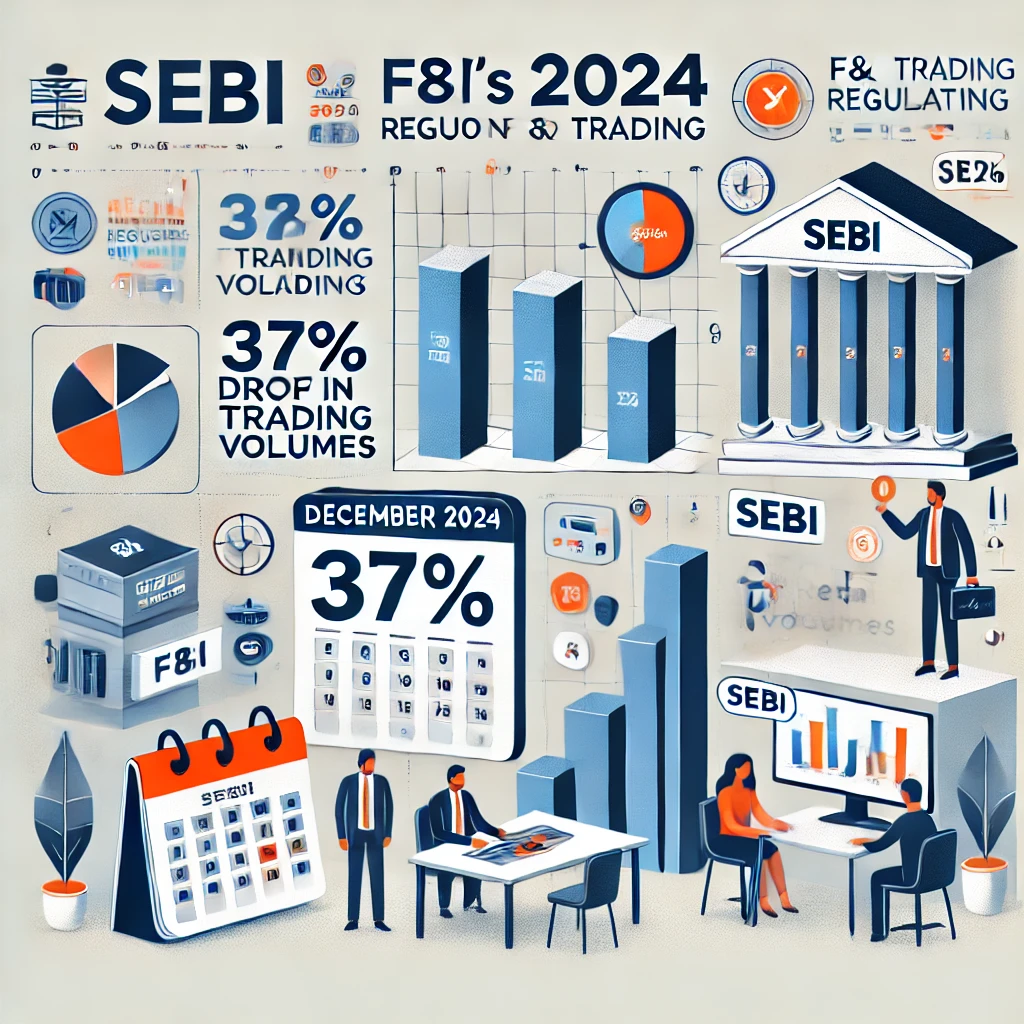SEBI F&O 2024, In December 2024, the Indian stock market saw a significant dip in equity Futures & Options (F&O) trading volumes, hitting a 16-month low. SEBI F&O 2024: Trading Volumes Fall to 16-Month Low. This dramatic change came after the Securities and Exchange Board of India (SEBI) introduced strict measures to curb speculative trading and protect retail investors.
Let’s explore what caused this decline and what it means for traders and the market.

What Led to the Drop in F&O Trading?
SEBI implemented several changes in December 2024 to make trading in derivatives more stable and reduce risks. These measures specifically targeted speculative trading, which has been a major source of volatility.
1. Restrictions on Weekly Expiries
- SEBI allowed only one weekly expiry per exchange.
- This move limits the frequent opportunities for short-term speculative trading, making the market less volatile.
2. Higher Margins on Expiry Days
- A 2% Extreme Loss Margin (ELM) is now required for all short positions on expiry days.
- This additional margin protects against unexpected price swings and ensures traders have adequate funds to cover their positions.
3. Larger Contract Sizes
- Starting January 2025, the minimum size for F&O contracts has increased, requiring a higher investment of ₹1.5–2 million.
- This change discourages inexperienced retail investors from engaging in high-risk trades.
Immediate Impact on the Market
Sharp Decline in Volumes
The average daily turnover (ADTV) of F&O trades dropped significantly:
- December 2024: ₹280 trillion
- November 2024: ₹442 trillion
This 37% decline is the steepest in over a year.
Retail Traders Pull Back
Many retail investors exited the derivatives market due to the higher margin requirements and larger contract sizes. SEBI’s own study showed that over 90% of retail traders incurred losses in derivatives, with an average loss of ₹1.25 lakh per trader.

SEBI’s Goals: Stability and Protection
1. Promoting Market Stability
By limiting speculative trading, SEBI aims to reduce extreme price movements and ensure a more stable market.
2. Protecting Retail Investors
The new rules are designed to shield retail traders from the high risks associated with speculative trades.
3. Encouraging Responsible Trading
SEBI wants to create an environment where traders make informed decisions rather than relying on risky bets.
Upcoming Changes to Watch
SEBI has more reforms planned for 2025, which are likely to further impact the market:
1. Upfront Premium Collection
- From February 2025, traders will need to pay the full premium upfront for all positions.
- This move discourages traders from taking positions without sufficient capital.
2. Real-Time Intraday Monitoring
- Starting April 2025, SEBI will monitor intraday positions in real-time to ensure compliance and prevent excessive leverage.
Challenges and Opportunities
Challenges
- Lower Liquidity: The drop in trading volumes could make it harder to buy or sell contracts quickly.
- Impact on Brokers: Brokerage firms may face reduced revenues due to fewer trades.
- Adjustment Period: Traders will need time to adapt their strategies to the new regulations.
Opportunities
- A more stable and transparent market could attract long-term investors.
- Retail traders may benefit from lower risks and better protection.
Final Thoughts
SEBI’s new rules are reshaping India’s derivatives market by prioritizing stability and investor protection over speculative profits. While the initial impact has been a significant drop in trading volumes, these changes aim to create a healthier and more responsible trading environment.
For traders and investors, this is a time to adapt and rethink strategies. The long-term benefits of these measures could include a more stable market and reduced losses for retail participants.
Stay tuned for more updates on how SEBI’s reforms continue to shape the stock market!


